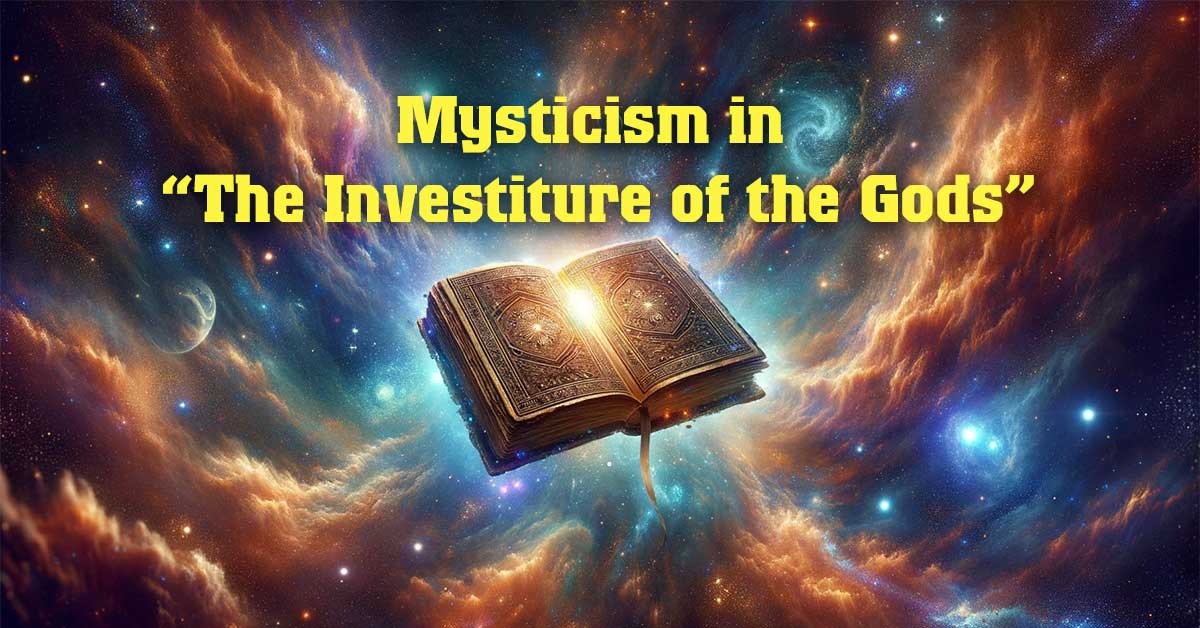In attempting to study religion, people often get frustrated and have much to think about the many serious controversial religious theories about the origin of life and the universe (the First Cause). One theory criticizes the other as if it alone is the true representative of Truth. In reality, which religion has seen the hidden truths of life and the universe? Or they too were like the blind men who each gave out wildly disparate descriptions of the elephant after touching it! This is not an issue for the naïve believers who do not seek the truth.
All they have to do is to close their eyes and believe in the dogmas. However, the objective persons still feel that they need to research the validity of the religious dogmas while studying religions. Those cautious people understand very well that there are subjects belonging to the supernatural that cannot be understood with simple reasoning and logic, and that can only be perceived by intuition or the ability to grasp mystical phenomena. But either through the reasoning ability or the super senses, when using oral or written language to express these physical or supernatural truths it should naturally be presented in a coherent and sensible way and especially in a way that everybody can understand it.
Now, let us try to take on the subject of the origin of life and the universe through the various explanations presented by different religions and criticize them.
When exploring the First Cause of the universe and human beings, religions have proposed three main theories: either accepting a First Cause as an omnipotent God or a personal Creator (Judeo-Christianity, Hinduism); or considering the First Cause as a principle or universal energy (Taoism, Confucianism); or rejecting the idea of a First Cause (Theravada or Original Buddhism).
I. The Omnipotent God or the Personal Creator
The personified Creator is known by many names across various religions, such as The Supreme Being, The Creator, God the Father, The Jade Emperor, Brahma, Jehovah, and more.
In essence, God is the supreme master of the universe and all beings, embodying the Whole Truth, The All Good, and the All Perfection. He resides in Heaven and governs everything as the Sovereign.
According to the Judeo-Christian bible, it is written: “In the beginning, God created the heavens and the earth. On the earth, where the waters gathered, was the sea with fishes. There was vegetation, including plants yielding seeds and trees bearing fruit. The heavens were adorned with lights and stars. Below the heavens, there were birds and other animals, and insects and wild beasts roamed the ground. Then, God created man in his image and fashioned a woman from his rib. Each species, male and female, came together to multiply.”
According to the ancient Hindu tradition: “Lord Brahma, the Great Brahma, the Supreme Being, the All-Knowing, the Authority of all decisions, the Founder, the Creator, the Victorious, the Self-existing Lord, and the Father of past, present and future of all beings. Brahma created all these beings. Why? Because Brahma had a thought, “I wish to have other creatures!” It was from his wish that other beings were born.”
Muslims conceive Allah as the Unique and Eternal Being, distinct from the creation and beyond comparison. They also recognize Adam as the ancestor of all humans, created from clay with Allah breathing life into him. Eve was formed from Adam’s rib, and they initially lived in Paradise until their expulsion to Earth due to sin. Legend has it that their reunion on Mt.
Arafat resulted in Adam’s tears staining a stone black, now worshipped at the Kaba temple.
According to Muslim belief, Allah created heaven and earth in six days. The initial two days were dedicated to the earth, the subsequent two to all living beings on it, and the final two to the heavens. Muslims further hold that there are seven heavens and six realms of hell.
In summary, Judeo-Christianity, Hinduism, and Islam share the belief in God as the Supreme Being with a distinct personality. He is the ultimate cause and origin of the world’s creation, and everything stems from His will.
II. Rejection of Creationism
In the original collection of scriptures of Theravada Buddhism, known as The Tripitaka, there is no mention of a Creator. Buddhism does not recognize a Creator, whether as a Supreme Being, a manifestation of Power, or as a multitude of beings. Regarding the origin of life, Theravada Buddhists assert that this subject is beyond human comprehension.
The initial rationale provided by Theravada Buddhists for avoiding complex metaphysical inquiries is illustrated through the analogy of someone struck by an arrow. When such a person asks questions like, “Who shot me? Where did the arrow come from? What kind of metal was it made of? What were the motives of the person who shot the arrow? What kind of poison was on it?” and so forth, it becomes clear that seeking detailed answers to every aspect of such inquiries might lead to the person’s demise.
Similarly, one who seeks profound knowledge about the origin of humans and the finite or infinite boundaries of the world might pass away before receiving answers from “The Teacher of the World.” The following story was related by a monk named Malunkyaputta (Malunkya sutra): “Blessed One, you have not explained those theories clearly. You put them aside and did not lecture on them. Is the world eternal? Is the world limited or unlimited? If you could explain those things clearly to me, I will continue to follow you and live a life of purity as a monk. If not, I will leave you… If you know these things, say that you know, and if you don’t know then just say so…And if a person is ignorant or is not enlightened, it is best to say, “I do not know because I am not enlightened.” The Buddha answered: “The Tathagata did not mention these issues because they do not lead to enlightenment or Nirvana and a person would die before he could hear the explanations.”
The second reason Theravada Buddhists provided to avoid addressing questions about the beginning of life and the universe is the perceived impossibility of discovering that origin.
In the Nikaya sutra, it is stated: “Oh disciples! The first step of this very long journey cannot be conceived. Living beings are obstructed by ignorance and cravings, bound tightly by ropes of passion so that they cannot perceive the starting point of the endless and undetermined journey.” To elucidate the matter, someone quoted the following reasoning: “There is no reason to suppose that the world had a beginning at all. The idea that things must have a beginning is due to the poverty of our thoughts.” (Bertrand Russell, 1872–1970, English author, mathematician, & philosopher).
The Theravada Buddhists presented two reasons for not intending to address all the philosophical problems of humanity. One reason is that such matters are not conducive to escaping suffering, and they are beyond the comprehension of individuals immersed in ignorance. To a certain extent, this stance seems reasonable.
However, they face an inconsistency when, on the one hand, they reject in-depth research into metaphysical matters, and on the other hand, they engage in criticizing Hindu reasoning on the same subjects. This inconsistency leads them to delve deeply into the metaphysical arena, contradicting their earlier stance of consistently evading questions by claiming the impossibility of knowing.
The Theravada Buddhists employed an apocryphal tale to refute the concept of God’s creation and to diminish the stature of the Creator Brahma, placing him beneath Buddha. This narrative was presented as if they were authorities in metaphysics, a realm they had previously left unexplored.
Minor Vehicle Buddhism counters the notion of divine creation with a story found in the Patika Sutta. This narrative portrays the deity Brahma as inferior to the Buddha and showcases a newfound proficiency in supernatural matters previously unexplored. The Buddha inquired: “Why do some revered individuals insist on the traditional belief that the world originates from the Self-created, from Brahma?”
When they were unable to provide an answer, the Buddha elucidated: “Once upon a time, the world underwent a transformation. During this period, most sentient beings were reborn into the Abhassara realm (the realm of the Radiant Gods) and resided there for a considerable duration. Eventually, the world transitioned into a void known as the Pham realm. At this juncture, when a sentient being’s lifespan ended, their blessings were depleted, or their collective karma reached its culmination, they would transition from the Abhassara realm into the empty Pham realm. There, they lived for quite an extended period. After living alone for an extended duration, they grew weary and longed for companionship: “I hope other sentient beings will also come to this place!” Subsequently, other sentient beings whose lifespans ended, blessings were exhausted, or collective karma concluded, transitioned from the Abhassara realm into the vacant Pham realm to join the initial sentient being. At that time, the first sentient being born into the first Abhassara realm believed: “I am Brahma, the Great Brahma, Almighty, Supreme, Omniscient, the Lord of All, the Creator, the Lord of All Beings, the Self-existent One, the Forefather of All Beings past, present, and future. It was through my desire that these sentient beings came to this place.” The other sentient beings who came later thought likewise: “That being is Brahma, the Great Brahma, Almighty, Supreme, Omniscient, the Lord of All, the Creator, the Lord of All Beings, the Self-existent One, the Forefather of All Beings past, present, and future. Because we see this being was here before us, we were born later.”
In this regard, disciples, the being born first is older, more beautiful, and more powerful. Those born later have shorter lifespans, are less attractive, and have less power. It is highly probable that some beings, in the same state as the previous being, have died and been reborn into human life on Earth. They renounced family life to become homeless monks. During meditation, they may recall past lives, but only to a limited extent.
Their memory is restricted, leading them to think: “The Great Brahma, the Almighty, the Eternal, the Unchanging.
They will exist forever. But we have been created by them, we are impermanent, subject to change, and mortal.”
The Theravada Buddhist tradition concludes that the traditional notion of Brahma as the Creator is actually a narrative fabricated by Brahma himself.
The Theravada’s competition for superiority with Hinduism becomes more apparent in the following made-up story named Kevaddha Sutra: A bhikshu asked Brahma, “Where do the elements of earth, water, wind, and fire end without leaving any trace?” Brahma answered: “In front of my students, I cannot say I do not know. Why do you leave Buddha to come here and ask me? This is very wrong and contrary to reason. You should go back to Buddha and believe what he says.”
On the contrary, the disciples of Buddha fabricated numerous stories to find faults in the supreme Creator of Brahmanism, whom they had previously admitted they knew nothing about.
The Jatakamala and the Mahabodhi Jataka Sutra asserted that life in this universe is chaotic, imperfect, and rife with unsightly dishonesty, trickery, greed, and ambition. According to these texts, if God, the creator of the universe and life, exists, then he is an unjust entity responsible for crafting a world replete with inequity and injustice. In this perspective, such a God is considered laden with sins, while humans merely fulfill His will.
However, it is not accurate to claim that Buddhism does not delve into the origin of the universe and life, as Theravada Buddhist monks used to assert. On the contrary, Mahayana Buddhists have proposed many doctrines about this extensive and far-reaching subject.
Regarding the universe and life, Mahayana Buddhists believe that the infinite and vast Dharma realm (the principle that orders the universe) is an illusory manifestation similar to an extended dream arising from each living being’s mind.
The Shurangama Sutra states: “All the innumerable realms appear in the Emptiness of space, and Emptiness appears in the mind similar to clouds appearing in the blue sky.”
Additionally, the Great Immense Wisdom Sutra expresses: “The worlds, the realms, the roots of beings… are like illusions, transformations, like dreams… the vapor fading away, the moon under the waters… displayed by a great magician squatting at a cross street.”
Moreover, Mahayana Buddhist sutras, such as The Lankavatara Sutra, the Adornment Flower Sutra (Avatamsaka Sutra), the Dharma Flower Sutra (Dharmapundarika Sutra), and the Earth Store Sutra (Kshitagarbha Sutra), along with the Supreme Prajna Sutra, provide comprehensive and detailed answers to various metaphysical topics, including the Buddha’s realm, the realms of heaven and hell, and the diverse realms of beings.
The Adornment Flower Sutra, for instance, states: “All the vast and immense realms and all the innumerable Buddha’s lands of the World Flower Store (representing the universe!) are gathered and established by the cosmic ocean of energy of the Buddhas, the vows of Great Bodhisattvas, and the sea of karmas of all kinds of living beings.” This sutra explicitly declares that the superior and pure realms of the universe were created by the higher supernatural power of the Buddha and Bodhisattvas, while the lower and dark realms were created by their lower power.
Furthermore, the Buddha’s higher power not only supports and preserves the lower realms but also exerts a profound influence on all living beings. According to The Adornment Flower Sutra (Avatamsaka), “Without such supporting and preserving power of the Buddhas, this universe could not have existed even for a ‘kṣaṇa’ (the smallest unit of time, 1/75 of a second), and this world could not have had the slightest happiness.”
In essence, without delving into the sutras of Theravada and Mahayana Buddhism, individuals identifying as Buddhists may find themselves easily perplexed.
This confusion arises due to the numerous contradictions not only between the doctrines of Theravada and Mahayana but also within the various sects of each. It is a misconception for someone to stumble upon a single Buddhist sutra, read a few theories on the universe, life, and spiritual cultivation, and hastily conclude that these represent the overarching views of Buddhism.
Within this article, our focus is on exploring the origin of the universe and life through various Buddhist doctrines, examining the disparities in these doctrines, and summarizing them as follows:
Theravada Tradition: Holds that the question about the First Cause is inconceivable and incomprehensible. Refuses to recognize any personal God or invisible power as the First Cause.
Mahayana Belief: Views life and the universe as products of the mind, manifestations of one’s consciousness.
Various Mahayana Sects: Believe that the universe and life originate from the supernatural power of the Buddha (a primal cause in a nontheistic philosophy).
Dharma Body of the Buddhas: Some believe it represents a first principle that is both theistic (personal Creator, Vairocana Buddha) and non-theistic (supernatural power), with the Dharma being a non-deistic supreme principle.
Buddhist Sects from Tibet and Nepal: Embrace a theistic standpoint, asserting that Adi Buddha, an omnipotent and omniscient Early Buddha, created the universe and all living beings through meditation, akin to the creation in Christianity or Hinduism.
Despite the diverse opinions about the Primal Cause, most Buddhists, regardless of their schools, use the argument of not recognizing God as a person or a Power controlling the universe and life to differentiate Buddhism from Christianity or Hinduism.
Although similarities exist between different religions, and a thorough understanding of God and the supreme principle remains elusive, prejudices persist among people.
III. First Cause as a Principle
When exploring the origin of the universe and life, Christianity, Hinduism, and Islam employ monotheism (Creationism) as their explanatory framework. In contrast, Early Theravada Buddhists consider this subject irrelevant, while Confucianism and Taoism lean towards a non-theistic perspective. Before delving into the teachings of Confucianism and Taoism, it is crucial to investigate the beliefs of the ancient Chinese people, as Confucius and Lao Tzu constructed their doctrines upon this foundation.
In the early cultures of ancient China and among similar primitive societies, there was a widespread belief that spirits or gods held sway over every aspect of human life. The fear and reverence for these deities extended to all imposing entities with motion, perceived as exerting a significant impact on daily existence and thus considered divine.
Among the many revered gods were those associated with celestial bodies such as the Sun, Moon, and Stars, as well as gods connected to natural elements like Mountains, Rivers, Lightning, Wind, Rain, and more. Naturally, rituals involving offerings and prayers to the gods emerged during this period. By observing the natural order, one could infer that just as the father is the head of the household, vassal states have their kings, and people have their emperors, there must also be a Spirit Ruler, Shang Ti, who serves as the Emperor of Heaven—a Supreme Being governing all deities and elements in the universe.
As contemplation deepened, some individuals began to question the feasibility of the Supreme Being sharing the same form as humans. This led to a shift in the perception of the Supreme Being’s figure, transforming it into a sacred and ineffable principle that governs all aspects of nature with great efficacy.
Confucius (551-479 BC) formulated his doctrine by examining the ideas of ancient sages and reassessing the principles guiding the changes of Heaven and Earth.
Confucius subsequently embraced the concept of Oneness, positing that Heaven, Earth, and all entities share a unified nature, as the core tenet of his philosophy. This principle of Oneness is omnipresent, acting as the driving force for life and transformations in the universe. It is also known interchangeably as Heaven, Supreme Being, or Tai Chi (Supreme Ultimate).
Tai Chi possesses a mysterious nature that transcends human understanding. Nevertheless, its operations become discernible through the observation of cyclical changes in living things. In essence, even though conceptualizing the identity of the Supreme Being might be insurmountable, we can grasp His actions through the creation of the universe and all things.
The fundamental essence of I Ching (the Book of Changes or oracles) and Confucianism is grounded in the examination of the universe in motion: In the beginning, there existed only chaos, shrouded in a mysterious, powerful, and potent principle referred to as Tai Chi, the Great Extreme. This principle gave rise to two opposing and interrelated forces, Yin and Yang (or Liang Yi, the diagram symbolizing Yin and Yang). While the existence of myriad things before the advent of Yin and Yang is uncertain and perhaps nonexistent, it can be asserted that with the emergence of Yin and Yang, everything else in the world had already come into being. The interplay between Yin and Yang, the opposing forces of negativity and positivity, involves a constant push and pull, resulting in a dynamic equilibrium that manifests in a multitude of beings and diverse forms of existence. All phenomena in the world arise from the dynamic interplay of Yin and Yang. “To comprehend the principle of Yin and Yang is to understand Nature; to grasp that simple principle is to fathom the cause of human existence.” (I Ching – Xi Ci Shang). Yin and Yang transcend physical form; they symbolize the fundamental essence of changes and transformations in nature.
In Confucianism (Ru Jia), humanity occupies a crucial role in nature: “Man possesses the spirit and intelligence to fully comprehend nature.
Man is the virtue of heaven and earth, the interaction of Yin and Yang, the convergence of the devils, the essence of the stars, and the five elements” (Book of Rites ‘Li Ki IX). In summary, the Ru Jia school does not directly explore the essence of Heaven but endeavors to understand it through the observable changes and transformations in nature. The initial movement of Heaven is Tai Chi, giving rise to Liang Yi – two opposing forces (or elements). Liang Yi then led to the formation of the Four Phenomena, and the Four Phenomena generated the Eight Hexagrams, ultimately leading to the creation of myriad things. Beings that absorb the purest essence become Saints and Deities, while those that absorb less become humans or other entities, including inanimate objects.
Regarding Taoism, the Tao (translated as the Path or the Way of both the physical and spiritual aspects) is the absolute principle of the cosmos that has existed since the creation of heaven and earth. It is so mysterious and beyond imagination that it seems non-existent. Therefore, as per Zhi Bei Yu, “The one who asks about the Tao and the one who answers that question is both ignorant of the Tao,” or “When a foolish person hears of the Tao, he laughs out loud at the very idea” (Book of Virtue-Tao Te Ching). Similar to Confucianism, when Taoists discuss Tai Chi, they use the term Tao to denote the origin of life and nature.
Lao Tzu, the ancient sage who founded Taoism around 604 BC, expressed: “The Tao gave birth to one, one gave birth to two, two gave birth to three, and three gave birth to the multitude of things in nature. All things in nature carry Yin on their backs yet hold Yang in their bosoms. Yin and Yang are opposite of each other, yet they blend to attain harmony.” The “one” mentioned here can be compared to Confucianism’s Tai Chi in motion, creating and transforming all things in nature. Thus, the nature of Tao may seem non-existent and idle, but in reality, everything is created from it. Tao, as the ruler of creation, guides all species through countless changes and transformations, ultimately leading them back to Tao: departing and returning.
This is a simplified representation of Tao, but as stated in the Tao Te Ching: “Approach it from the front and you will not see a beginning; Follow it and there will be no end. While Lao Tzu did not explicitly address the position of humans in the universe compared to other creatures, he indirectly conveyed, “Man models himself (follows) after Earth, Earth models itself after Heaven, Heaven models itself after the Tao, and the Tao models itself after Nature. Consequently, regardless of the perceived dignity of human beings, they must all observe the changes and activities of Heaven, Earth, and Tao, and live by these mystical and natural laws.
Both Confucianism and Taoism conveyed the metaphysical principle as the First Cause of creation, yet this concept does not resonate with the majority of the Chinese people and their beliefs. The abstract notions of Tai Chi or the Tao, as proposed by Confucius and Lao Tzu, are challenging for the Chinese people to grasp. Even if they make earnest attempts to comprehend these principles, the acceptance that a mere ‘principle’ is responsible for creating the universe and all its elements, especially human beings, remains elusive.
What aligns more with their understanding is the concept of a Creator fashioned in their likeness. Regardless of the attributes of omnipotence, omniscience, benevolence, perfection, and others, a Creator with relatable qualities is more accessible and reasonable to them. Hence, the Chinese people have woven thousands of stories around the Heavenly Jade Emperor in his White Jade Palace, accompanied by Saints, Deities, Immortals, and Spirits governing the universe and all species. They find solace in this tangible and comprehensible narrative, paying little attention to the mysterious and intricate metaphysical principles envisioned by Confucius and Lao Tzu.
That is truly so.
In essence, various religions propose conflicting theories about the First Cause; however, they generally converge on the acknowledgment of an ineffable force that governs all existence.
This absolute One, whether personified as the Creator or conceptualized as a metaphysical principle (metaphysical power), or even a combination of both, remains a relative notion pointing to something beyond human comprehension.
For individuals endowed with the “third eye” and blessed with visions of extraordinary heavenly realms—featuring the Creator, Buddhas spanning the ten directions, angels, saints, deities, the Buddhas’ lands of salvation, and the dharma assembly—their interpretations attribute these visions to the influence of that metaphysical Power.
If individuals possess mystical experiences, they may comprehend that metaphysical power can manifest in numerous forms, undergoing mystical transformations tailored to one’s religious inclination and level of spiritual and intellectual understanding.
Polytheistic believers might witness a multitude of deities, while Mahayana Buddhists may envision the Buddhas of the Ten Directions. For Tibetans, Kwan Yin may appear as a male, while for the Chinese, Japanese, and Vietnamese, she takes on a female form. These visions and spiritual experiences vary to accommodate diverse beliefs, such as the Tai Chi diagram for Taoists, Emptiness for Theravada Buddhists, the God of Fire for Brahmanism Hindus, the Mountain God for those in mountainous regions, the God of the Banyan tree for simple peasants in Vietnam, and the family patriarch for those venerating their ancestors, and so forth.
Indeed, it is these myriad spiritual manifestations of heavenly realms that perpetuate people’s enduring belief in religions, regardless of the perceived foolishness, obscurity, or simplicity of their views concerning the Tao, Supreme Ruler, Buddha, and Deities. Even in the face of mutual mockery of each other’s fallacies, what holds paramount importance is their unwavering faith in something greater than themselves and someone capable of meting out rewards and punishments for their actions on this earth. This, in itself, is enough.
Related Post
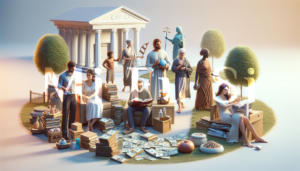
Delusional Disorder
Delusional Disorder (Bệnh hoang tưởng của tu sĩ by BìnhChâu on Sun Apr 11, 2010 12:45 pm, translated by ngocxuan....
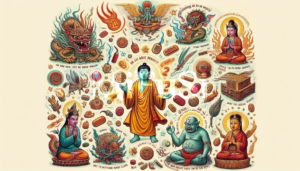
Interpreting “Bùa” and “Chú” in Mystical Practices
Interpreting "Bùa" and "Chú" in Mystical Practices Translation from: Bùa, chú Mật tông by Akira When encountering spells, amulets, and...
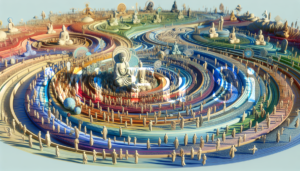
Maitreya
Maitreya The following text comes from the Cambodian Buddhist web site http://reksmay.webs.com/messagefrombuddhas.htm. I would like to hear your opinion of...

Story 11 – A mysterious illness
Story 11 - A mysterious illness Câu chuyện số 11 - Bệnh Vô Hình by ThầyGià on 12 November 2008,...

Which Religion Reigns Supreme?
Which Religion Reigns Supreme? (Đạo Hay Nhất! by như-ý on Mon Feb 09, 2009 3:05 pm Translated by Xiaobaiyun.) The...
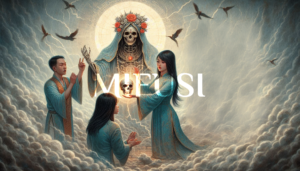
Story 5 – Magical Skull practice and Explanation
Story 5 - Magical Skull practice and Explanation Câu chuyện số 5 - Thiên linh cái và lý giải by...
The High Priestess (II) Reversed
The High Priestess (II) Reversed (Card Descriptions Based On Original Rider-Waite Colors – Still Under US Games Inc. Copyright) Keywords...
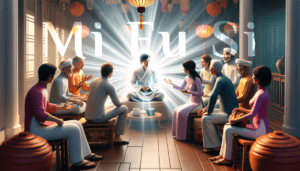
MYSTERIOUS LANGUAGES
MYSTERIOUS LANGUAGES (Chư vị tá khẩu - 3 người nghe ra 3 ngôn ngữ - Sent by Bạch Hạc on...
